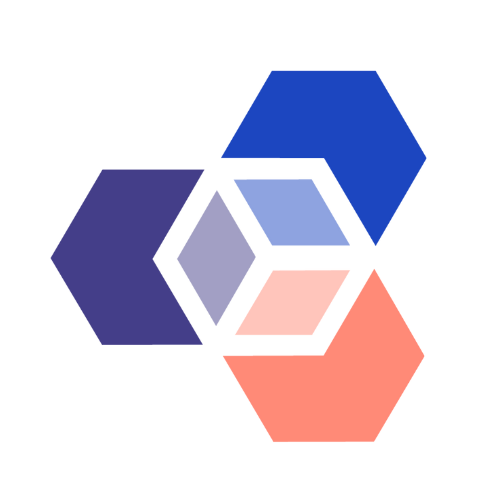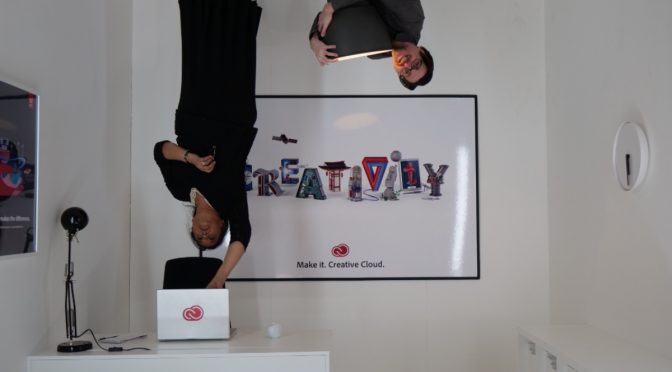
Copyright © 2019 Adobe. All rights reserved
The Bett 2019 Education Technology event has come and gone, and 2 intrepid Open University explorers decided to brave the cavernous space of the Excel and see what it had to offer.
Mark’s account
The day started with joining the bustle of thousands of expectant educators looking to transform their student experience and hopefully their future workload. The space at the Excel is momentous but nothing prepares for the scale of the event. It is huge!!!! Countless stalls with educational solutions await, with tree-loads of leaflets and educational booklets waiting to be collated in the hope they will provide inspiration (bags are provided during entry to the event). It is always best to plan the day to maximise on the information needed to suit one’s own context, and therefore the Post 16 Arena events were on our list and seemed to offer the best solutions for a higher education context.
Gaming environments become learning tools.
Teesside University spoke about their use of Minecraft to create simulated environments for teaching, post Second Life. The role of the simulated spaces was for learners to gain access to environments that would test knowledge in a specific field and allow learners to make discoveries: developing theories about contexts, reproduced digitally. This is particularly useful when learners are denied the resources of an actual space to work in and investigate how these effect data and materials. The presentation made clear that the use of Minecraft had now made it possible for students to sample vegetation, environments and ecosystems in a successful way. Because constructed environments can be manipulated, they can be set up to mimic a collection of scenarios (thus providing diverse information to learners).
What is interesting about these simulated spaces is that they allow some learners with social anxiety and learner needs, a comfortable space to practice skills before moving into a real-world environment. With learners developing digital literacy skills, the ability for them to create their own environments using software like Minecraft becomes a real possibility: constructing environments for other learners and to practice a whole range of skills (subject based, social skills, communication, leadership).
It’s all about creativity.
Adobe’s creative software offered solutions for learners to prepare visual presentations. Adobe Spark offered a simple solution to the coupling of image and text and could be beneficial in adding creative presentations to all subject areas. My colleague and I were flipped upside down in a specially prepared studio space by the Adobe team (appearing to be clinging to light fittings on the ceiling). Face mapping software also meant that I was turned into an animated drawing in something reminiscent of A Ha’s Take on Me video. Both scary and fun, this software has possibilities for staff and learners to present material in creative ways. There is a push to bring creativity back into all aspects of learning and I am in full agreement with this for so many reasons.
A range of mobile presentation software showcased interactive design, on tablets, which could be used to combine graphics and text and uploaded to a VLE. Jamboard was one of these and has the potential to allow learners more creative freedom. As presentations are becoming more sophisticated through media and graphics, learning environments need to encourage students to tap into the creative potential that could develop their employability and communication skills.
Inside virtual narrative.
Carrying on the theme of creative space, I took part in the virtual space mission presented by the Moscow Center for Quality of Education. What stood out was the virtual reality lab which required the mixing of chemicals to see how they reacted. Wearing the virtual reality headset, I was suddenly transported into a futuristic lab where I had to grind up powders, pour these into beakers and add chemicals to the mix: watching as the chemicals created a reaction and transformed into a solid structure, foaming out of the container. This was a smooth experience, and I only once made contact with a spectator who shrieked somewhat as I was opening a virtual closet and reaching in to grab protective goggles. The virtual reality experience was part of a narrative that involved a host of other real speakers and objects. This is important, and I think this is where the power of learning can be transformed using technology. By placing individuals and groups within a narrative, a story or situation, there is a real investment in moving forward and playing a part (learning from the virtual world and finding answers to constructed problems). The potential to use these within engineering, medicine, environmental studies and the creative industries is clear.
In conclusion
The emergence of virtual or simulated environments to create a meaningful learning context will transform the way that learners develop knowledge. It will provide ways for learners to test out skills and consider how they might adapt understanding to suit a range of scenarios and contexts. Not as a substitute for real environments, but as a precursor to them and to access the inaccessible. This virtual space can also allow learners to develop skills, technical and social, before moving into real world situations. However, there is also an important work-based aspect to this as industries are using virtual spaces for construction, design and real-world modifications (such as in engineering).
Those of us interested in the emergence of new technologies, will know that this is where education is heading. However, Bett provided some personal accounts of where this is being used currently. This is where exhibitions and events can, I think, be the most helpful and I would advocate that they have more of an element of sharing experience and practice.
Nat’s account coming soon…..

